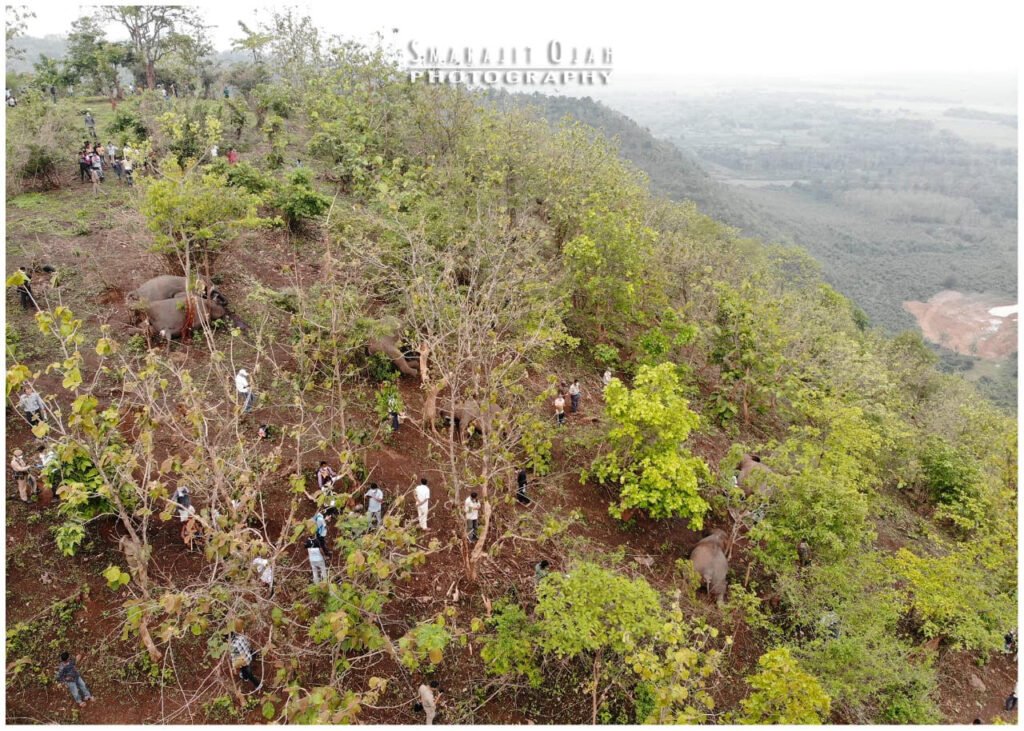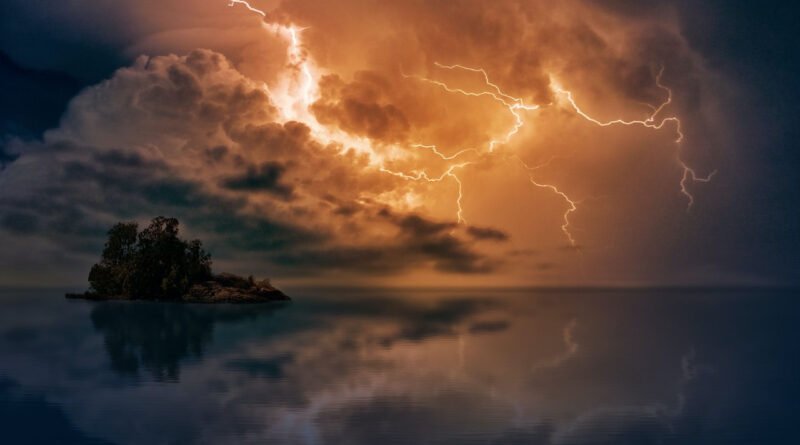Silent Thunder
Silent Thunder
Kaushik Barua
When I got the news that a group of elephants had died atop a hill at Bamuni in Assam’s Nagaon District, all sorts of thoughts started crossing my mind, for the area had witnessed a number of elephant deaths over the years due to conflict. My initial reaction to the incident was how can humans have fallen so low to have caused the death of 18 elephants. As I watched visuals of these Gentle Giants lying lifeless never did I once suspect lightning to be the cause of death.
As the day progressed , more visuals and conflicting reports started pouring in leading to further confusion. The evening was spent discussing the incident with folks in the elephant network. During the course of discussion a close wildlife veterinarian acquaintance pointed out that from the visuals it seems that the elephants might have died after being struck by lightning. This coming from someone with almost 25 years of field experience was not to be taken lightly and got me thinking.
Unlike many emotional and suspicious minded human I am a firm believer of science and resort to it whenever such a situation needs to be interpreted and understood. This was not the first time that lighting had struck and killed elephants or other wildlife. Across the globe there were records of such occurrences. Thus my quest for answers began.
The rest of the evening till the wee hours of next day was spent extracting and comparing visuals, information and explanations regarding such occurrences. By the time I was done with Chandima Gomes’s paper titled “Lightning Safety of Animals” in the International Journal of Biometeorology and other related and relevant documents by the likes of Professor Volker Hinrichsen and others, I had reasons enough to believe that the death of these Gentle Giants “might” have been caused by lightning. Nevertheless, I decided to wait for inputs from the investigating team to satisfy myself further. It was now time for me to catch a wink.
As daylight broke the investigating team comprising of forest officials and veterinarians were already near the place of occurrence. After an arduous climb up a hill the team managed to reach the location. The first thing they did was confirm the numbers. Bodies of 18 elephants were found. Preliminary post mortem findings and circumstantial evidences indicated lightning to be the cause of death. A South African veterinarian with years of wildlife experience who had been provided with visuals of the occurrence and explained the situation, concurred with the findings of the investigation team. There was enough proof now to satisfy myself and confidently state that it was lightning that caused had their death.
So what exactly happened ?
On the morning of 12th May 2021, 18 elephants which were supposedly a part of a larger herd huddled together for safety when caught in a thunderstorm atop the hill. Elephants have been known to do this when sensing danger. Little did they know that moments later lightning will strike ringing in a death knell.
Studies have shown that the region is prone to lightning and that the most intense flashes strike before dawn between the months of April – May. Moreover, weather agencies both national and international have confirmed the area of occurrence to have been bombarded with lightning strikes of various intensities capable of decimating any lifeform on impact.
Weather report , evidences such as lightning strike marks on trees, partially burnt leaves, a rocky ground which was wet due to rain, burnt foot sole, charred ear, vegetation in mouth observed in one of the carcass and sternal position of most of the carcasses indicated electrocution by lightning to be the cause of death.
In all likelihood, lightning had struck trees atop the hill and current travelled along the earth. A wet ground made it more conductive and cover maximum area. Because ground has high impedance, the current chooses a better conductor, in this case the Gentle Giants. Elephants being large bodied, provide an easy path for the current to flow. Current when it flows through the front and back legs of an animal will travel through it’s heart and/or nervous system often resulting in a fatal outcome due to the heart stopping, coagulated blood and brain blood clots. The charred ear in one of the carcass indicates that it might have been hit by a side flash when a portion of the current deflected after lightning struck a tree under which it had sought shelter. In any case, death was instantaneous.
Among those that died, a few would have reproduced within the next 2 to 3 years. Elephants share strong social bonds within and among family groups. Because of the incident, the rest of the herd may demonstrate post traumatic stress and the area might see a spurt in negative interactions between humans and these Gentle Giants.
Never have we witnessed a catastrophe of this magnitude. Whatever has happened has happened and can never be undone or reverted. It was an act of God. Our only solace being, that for once humans were not involved in the massacre of these Gentle Giants.
For the moment let us put aside the “conspiracy theory” . The area is part of a greater elephant habitat where once these Gentle Giants roamed unhindered. Had there been mature and dense vegetation, things might have been different and I wouldn’t have been writing this. Yes, “corridors” are confusing and we have made it so.
“ Oh Lord! forgive us for we lesser mortals to satisfy our ego have sought glory in your death. “
// Gajendra Moksha //


Kaushik Barua is a conservationist by chance for whom herds and packs are family.

